Something went wrong!
Hang in there while we get back on track
Best attractions in Emilia-Romagna
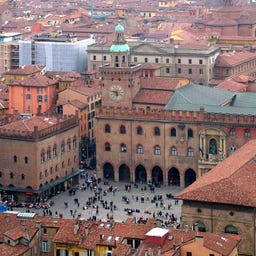
Piazza Maggiore, the heart of Bologna, is an essential stop on any visit. This lively square is surrounded by historic landmarks, including the Palazzo dei Banchi, the Palazzo del Podestà, and the magnificent Basilica of San Petronio. It's a favorite gathering spot for both tourists and students.
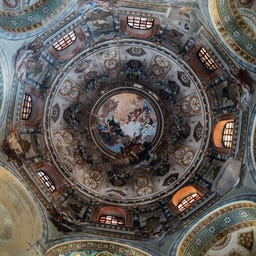
The Basilica of San Vitale in Ravenna is a masterpiece of early Christian architecture, renowned for its magnificent mosaics. This unique building, dating back to the 6th century, blends Western and Eastern architectural styles in a truly exceptional way. Upon entering this octagonal gem, you are immediately struck by the vibrant colors and intricate depictions of biblical scenes.
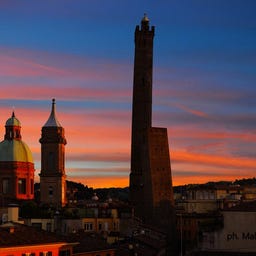
Everyone knows the Leaning Tower of Pisa. But have you heard of the Two Towers of Bologna? The Torre degli Asinelli and the Torre Garisenda are iconic landmarks of the city. The Torre degli Asinelli, impressive at 97.2 meters tall, is the tallest medieval leaning tower in the world.
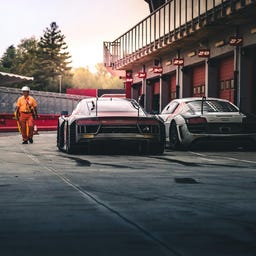

The majestic Duomo di Modena is one of the most significant examples of Romanesque architecture in Italy, built between 1099 and 1389 on the remains of two earlier churches from the 5th century. The impressive cathedral, which has been a UNESCO World Heritage Site since 1997, captivates with its intricately designed façade featuring the famous Genesis reliefs by the sculptor Wiligelmo.

The Quadrilatero district, conveniently located to the east of Piazza Maggiore, is a grid of compact streets around Via Clavature (Street of Locksmiths). This area is a must-visit for food enthusiasts and architecture buffs alike. Wander through narrow alleyways and tall archways and enjoy the lively atmosphere. This culinary haven is Bologna's oldest market, offering the best in Italian street food, regional wines, and homemade tortellini pasta. There are also a number of indoor markets including the Mercato di Mezzo.
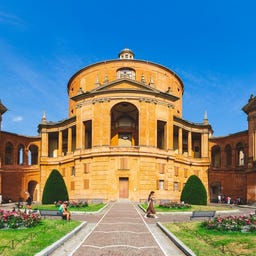
The Santuario Madonna di San Luca sits picturesquely atop the Colle della Guardia, offering stunning panoramic views of the city and the surrounding countryside. This Baroque basilica, dating back to the 18th century, is connected to the city by a unique arcade that stretches nearly four km, providing pilgrims with shelter from wind and weather.
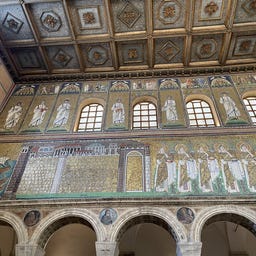
The magnificent 6th-century basilica, just a ten-minute walk from the old town, is one of the area's absolute highlights. Originally built by King Theoderic as an Arian palace chapel, it was later consecrated as a church in 561 under Byzantine rule. The basilica is renowned for its impressive mosaics, with the upper rows vividly depicting 13 scenes from the life of Christ and the Passion. The walls showcase a long procession of saints and martyrs, a true feast for the eyes. These mosaics, blending Arian and Orthodox iconography, create a unique and captivating artistic treasure.
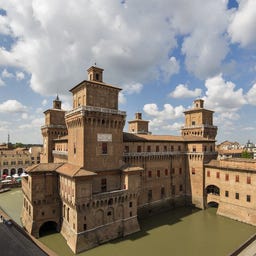
With its four distinctive towers and surrounding moat, the Castello Estense majestically stands in the heart of the Renaissance city of Ferrara. The powerful fortress, built by Niccolò II d'Este in 1385 as a defensive structure, became the permanent residence of the Este family after a failed coup attempt in 1476.
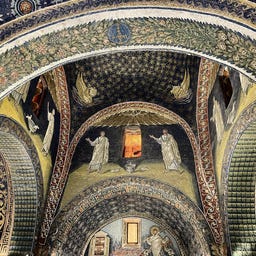
The Mausoleum of Galla Placidia, is a true surprise when entering the unassuming, small building. With its stunning deep blue starry night sky mosaic, the building stands as a testament to artistic brilliance. The empress Galla Placida was responsible for the rich art we can find today in Ravenna.
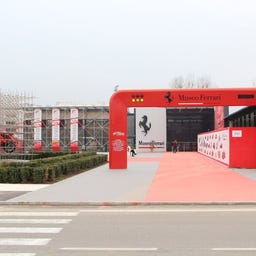
The Ferrari Museum, just 20 km from Modena, is one of the absolute highlights for Ferrari enthusiasts. It offers a beautifully curated and interactive journey through the illustrious history of Ferrari. Visitors can admire rare and iconic Ferrari models, technical drawings, and historical documents. The collection of Formula 1 cars is a major attraction, featuring legendary vehicles such as the 500 F2 from 1952 and Michael Schumacher's F2004.
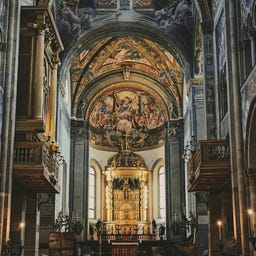
The Duomo di Parma, officially known as the Cathedral of Santa Maria Assunta, stands as an impressive testament to medieval architecture with its distinctive Romanesque facade from the 12th century. Inside, you’ll find an exciting blend of Romanesque architecture and Renaissance decor, highlighted by Correggio's famous dome fresco of the Assumption of Mary from the 1520s.
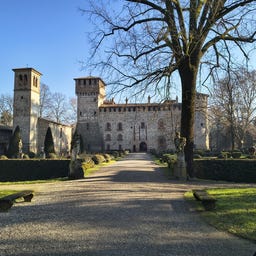
In northern Italy, Grazzano Visconti offers you an impressive medieval castle complex from 1395, built by Giovanni Anguissola after his marriage to Beatrice Visconti. The square fortress, with its four distinctive corner towers and former moat, was destroyed by French troops in the 16th century and extensively renovated in the early 20th century.
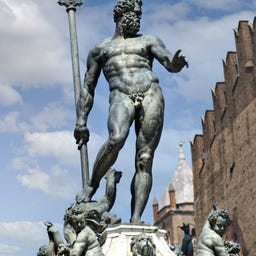
In the middle of Piazza del Nettuno in Bologna stands the impressive Neptune Fountain from the 16th century, which the locals affectionately call "the Giant." The structure, created by Tommaso Laureti and Giambologna, is topped by a bronze statue of the sea god that is over three meters tall, surrounded by intricate nymphs and water-spouting dolphins on a pedestal made of Veronese marble.
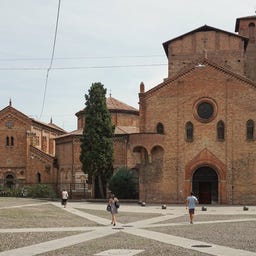
Basilica Santo Stefano, hailed as one of Bologna's most beautiful, is a complex of 7 churches spanning various historical periods. Referred to as Seven Churches (Sette Chiese) or Holy Jerusalem, this minor basilica on Piazza Santo Stefano boasts a labyrinth of interlocking structures, incorporating Romanesque, Lombard, and ancient Roman elements.
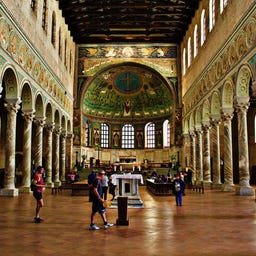
Located 8 km south of Ravenna, the basilica is an outstanding example of early Christian architecture and a UNESCO World Heritage Site. The apse and the triumphal arch are among the largest and most beautiful preserved mosaic surfaces from the 6th century.
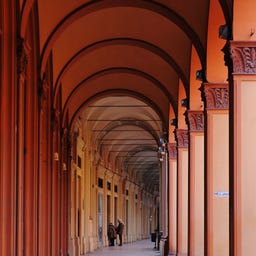
The porticos of Bologna, partially declared a UNESCO World Heritage Site in 2021, stretch over an impressive 62 kilometers and stand as a unique symbol of the city. Dating back to the 12th century, these arcades provide shelter from the sun and rain, playing an integral role in the daily life of Bologna's residents. Among them, the Portico di San Luca is particularly remarkable. Extending nearly 4 km with 666 arches, it holds the title of the longest portico in the world, guiding visitors from the city center to the pilgrimage church Madonna di San Luca.
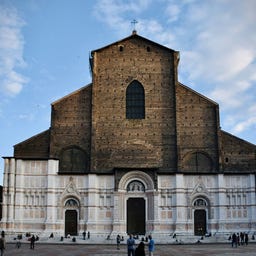
Located right next to Piazza Maggiore, the gothic Basilika di San Petronio dates back to 1390. Dedicated to Saint Petronius, the city’s fifth-century bishop and patron saint, the basilica features an incomplete facade that adds to its charm. Notably, Emperor Charles V chose this site for his 1530 coronation by Pope Clement VII. Inside, visitors can admire the basilica’s 22 side chapels and experience the enchanting sounds of its ancient organs, among the oldest still playable in the world.
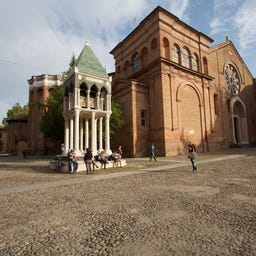
The Basilica of San Domenico is considered one of the most beautiful churches in the city. A highlight is the Arca di San Domenico, a magnificent tomb for the founder of the Dominican Order, crafted by renowned artists like Nicola Pisano and the young Michelangelo. Inside, the church boasts masterful artworks and numerous chapels. Among these is the impressive Rosary Chapel, which features paintings by Guido Reni and frescoes by Filippino Lippi. Visitors can also admire three statues by Michelangelo: St. Petronius, St. Proculus, and an angel.
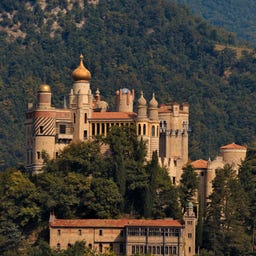
Rocchetta Mattei stands as one of the most curious castles to explore in Emilia-Romagna. Perched atop a hill, this castle, once owned by the eccentric founder of electrohomeopathy Count Cesare Mattei, offers a unique blend of Gothic and Moorish architecture. Climb up winding staircases, admire striking courtyards and visit the distinctive black-and-white-striped chapel.
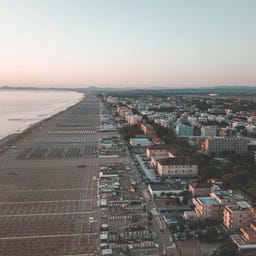
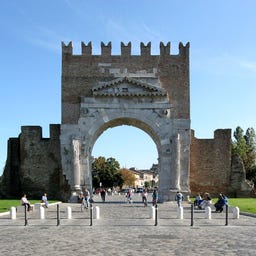
As the oldest surviving triumphal arch in Rome, the Arco di Augusto has stood since 27 BC at the end of the historic Via Flaminia, which once connected Rome to Rimini. Made from Nabresina travertine, the arch was erected in honor of Emperor Augustus and adorned the main gate of the city for centuries before being uncovered in the 1930s.
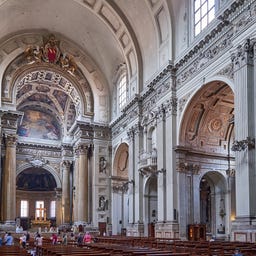
The Cattedrale di San Pietro has been the most important church in Bologna and the seat of the archdiocese since the 10th century. After a devastating fire in 906, it was rebuilt within the city walls and consecrated by Pope Lucius III in 1184.
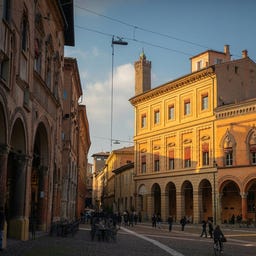
The triangular Piazza Santo Stefano, also known as Piazza delle Sette Chiese, is one of the most atmospheric squares in Bologna. Here, the impressive Basilica di Santo Stefano dominates the scene, while historic noble palaces like the Palazzo Bolognini Amorini Salina with its distinctive terracotta frieze surround you.
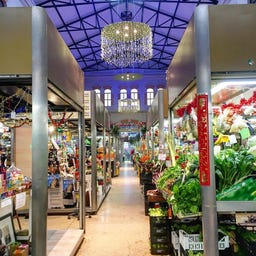
In the historic center of Bologna, you'll find the Mercato delle Erbe, a charming market hall from the early 20th century, designed by engineers Arturo Carpi and Gioacchino Luigi Mellucci, featuring a distinctive glass roof and a cross-shaped layout. After suffering heavy damage during World War II, the market reopened in 1949 and has since become a vibrant hub for fresh fruits and vegetables. Following a major renovation in 2014, you'll discover not only traditional market stalls but also numerous restaurants, bars, and snack spots all under one roof. Originally conceived as a temporary space for street vendors from Piazza Maggiore, the market has evolved into a popular meeting place for locals and visitors alike.
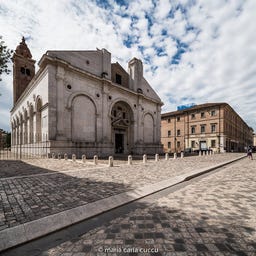
In the Tempio Malatestiano, the current cathedral of Rimini, Christian and ancient elements blend into a unique Renaissance structure. What began as a modest chapel in the 9th century was transformed into an ambitious prestige project starting in 1447 under Sigismondo Pandolfo Malatesta, with artists like Leon Battista Alberti and Agostino di Duccio leaving their lasting mark.
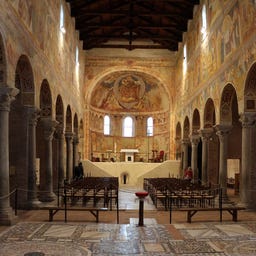
Founded in the 9th century, the Abbazia di Pomposa is one of the most significant monastic complexes in Northern Italy, featuring an impressive three-nave basilica adorned with exquisite marble floors from the 6th to 12th centuries. The 48-meter tall bell tower in Romanesque-Lombard style and the remarkable 14th-century frescoes reflect the former importance of the monastery, where the monk Guido d'Arezzo invented modern musical notation.
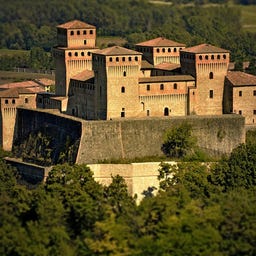
Majestically, the Castello di Torrechiara sits atop a rocky hill at the entrance of the Val Parma and is considered one of the best-preserved castle complexes in Italy. Built in the 15th century by Count Pier Maria II de' Rossi, the fortress combines medieval defensive elements like triple stone walls and moats with Renaissance architecture.
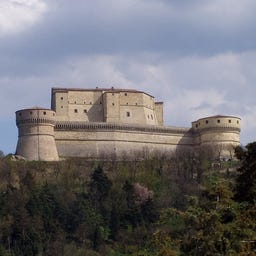
Majestically, the Forte di San Leo towers over the Valmarecchia Valley, offering you a breathtaking panoramic view of the Emilia-Romagna region. Originally built by the Romans, the fortress was extensively remodeled in the 15th century by Federico da Montefeltro and today combines Gothic and Renaissance elements in its impressive architecture.
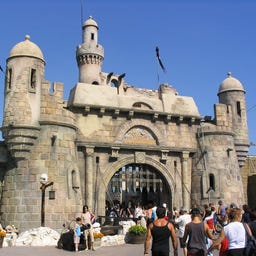
Italy's largest amusement park, Mirabilandia, spans an extensive area of 850,000 m² near the Adriatic coast. Since its opening in 1992, the park has continuously evolved and now features 42 attractions, including nine roller coasters and the impressive Eurowheel, which stands at 92 meters tall and is one of the park's landmarks.

The Enzo Ferrari Museum in Modena pays homage to the legendary car manufacturer's life and work. Housed in a futuristic glass and aluminum building that evokes the sleek hoods of 1950s cars, the museum features an impressive collection of both classic and modern Ferrari models.
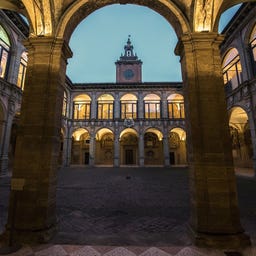
In the heart of Bologna's old town stands the Palazzo dell'Archiginnasio, which was built in 1563 as the main seat of the oldest university in Europe. Designed by Antonio Morandi, this Renaissance building houses the Anatomical Theater from the 17th century, one of the most fascinating historical lecture halls in Italy, which has been faithfully restored despite severe war damage.
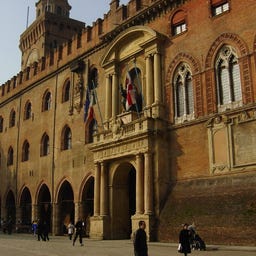
The powerful Palazzo d'Accursio has been overlooking the central Piazza Maggiore since the 13th century and still serves as the town hall of Bologna. With its richly decorated façade, the monumental portal by Galeazzo Alessi, and the famous terracotta Madonna by Nicolò dell'Arca, it is one of the city's most significant buildings.
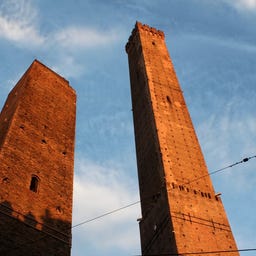
With its impressive height of 97.20 meters and a western tilt of 2.23 meters, the Torre degli Asinelli is the tallest leaning tower in Italy. Built by Pietro Asinelli in the early 12th century, the tower was originally used for city observation before being taken over by the city of Bologna in the late 14th century and repurposed as a prison and fortress.
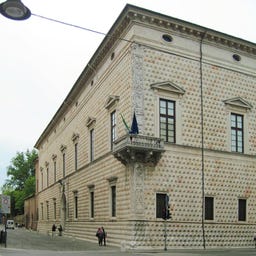
In the heart of Ferrara stands the Palazzo dei Diamanti, whose unique marble facade made up of 8,500 diamond-shaped stone blocks immediately captivates you. Designed by Biagio Rossetti in the late 15th century for the powerful Este family, this Renaissance palace impresses with its typical courtyard, a cloister, and intricately decorated ceilings.
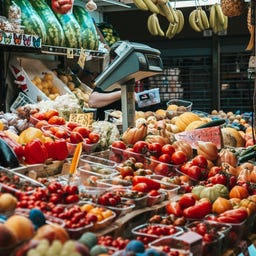
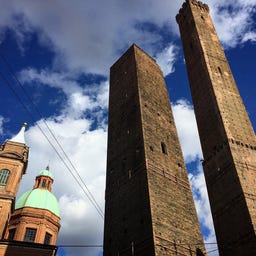
The leaning tower Torre della Garisenda, dating back to the early 12th century, is one of the most iconic landmarks of Bologna and stands alongside the taller Torre degli Asinelli in Piazza di Porta Ravegnana. Originally 60 meters high, 48 meters of the Garisenda family's structure remain today, leaning at an impressive angle of 4 degrees and overhanging by 3.22 meters.

In the heart of Bologna lies the Giardini Margherita, the city's most important green space, covering 26 hectares. Opened in 1879, the park is named after Queen Margherita and features beautiful English garden architecture with ancient oaks, linden trees, and magnolias, as well as a picturesque lake fed by the Savena River.
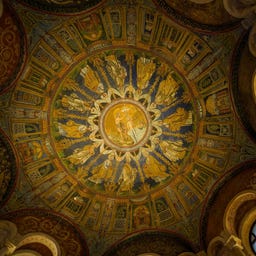
Built in the early 5th century, the octagonal Baptistery of Neon is now one of the most significant early Christian structures in Ravenna and is part of the UNESCO World Heritage. While the exterior of the baptistery is quite simple, inside you will find an impressive mosaic ensemble featuring the central depiction of the Baptism of Christ in the dome. Named after Bishop Neone, the building symbolizes resurrection and is located about two meters below street level today, blending classical and Byzantine art. In concentric rings, the mosaics display biblical figures and the twelve apostles, framed by intricate ornaments and draperies.
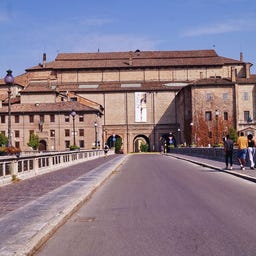
In the heart of Parma stands the Palazzo della Pilotta, a vast complex from the late 16th century, named after the Spanish ball game Pelota, which soldiers once played in its courtyards.
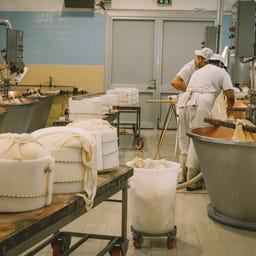
If you’re in Parma, a tour of the production sites for Parmigiano Reggiano and Prosciutto di Parma is an absolute must! You’ll get fascinating insights into the entire process – from steaming copper vats to the fragrant aging rooms – and discover just how much passion and craftsmanship goes into creating these world-famous delicacies. The best part? The tasting at the end, of course!
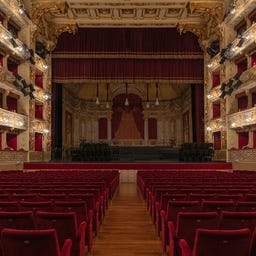
In the Teatro Regio, one of the most important traditional opera houses in Italy, you will find a magnificent horseshoe-shaped auditorium with four tiers of boxes and a gallery. Founded in 1829 by Maria Luigia d'Austria, the theater impresses with its neoclassical façade featuring ten Ionic columns and an impressive chandelier from 1853 that weighs a remarkable 1,100 kg.
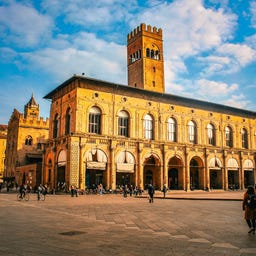
The Palazzo del Podestà has shaped the face of Piazza Maggiore, the central square of Bologna, since the 13th century. Originally a Romanesque administrative building, it was transformed in 1453 by Aristotele Fioravanti in the Renaissance style and impresses with its 47-meter-high bell tower, the Torre dell'Arengo.
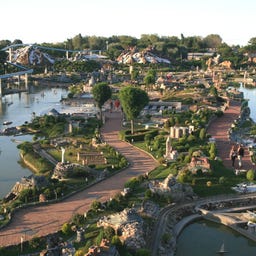
In the northern Italian city of Rimini, you can experience the extraordinary theme park "Italia in Miniatura," where you can admire over 270 scale models of the most important Italian buildings. Founded in 1970 by Ivo Rambaldi, the park now covers 85,000 square meters and is surrounded by 5,000 real miniature trees that integrate the models into a lifelike landscape.
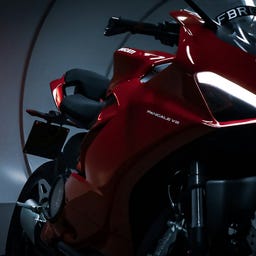
At the Ducati Museum in Bologna, you can expect a fascinating journey through the history of the legendary Italian motorcycle brand. The exhibition, which opened in 1998, spans seven themed rooms and showcases significant motorcycle models as well as racing memorabilia from the company's history.
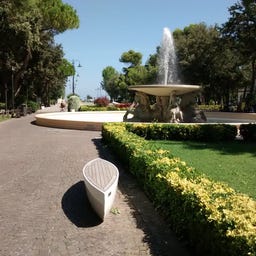

The 86-meter-high Torre della Ghirlandina is the iconic landmark of Modena, easily recognizable and part of the UNESCO World Heritage since 1997. The bell tower, which began construction in the 12th century and was completed in 1319, combines Romanesque and Gothic architectural elements and impresses with its intricate capitals and 15th-century frescoes in its historic halls.
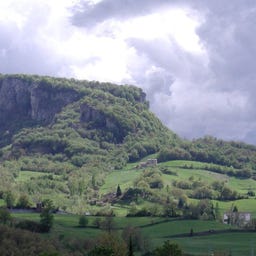
Rising like a powerful fortress, the Pietra di Bismantova stands at 1,041 meters as an isolated plateau in the heart of the Tuscan-Emilian Apennines. Even Dante Alighieri mentioned this striking mountain in his "Divine Comedy," while the Byzantines established a military site called Kastròn Bismanto here in the 5th century.
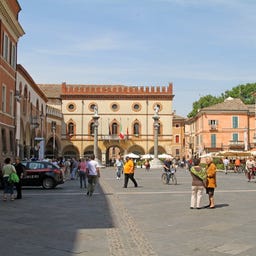
On the Piazza del Popolo, the central square of Ravenna, the city's rich history is particularly impressively reflected. Since its creation in the late 13th century under the rule of the Da Polenta family, the square has undergone numerous architectural transformations - from a Venetian palace to the current Palazzo Comunale.
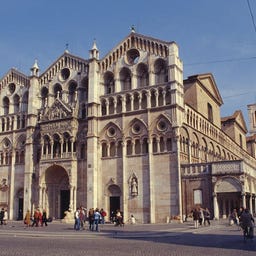
The majestic Cattedrale di San Giorgio has shaped the skyline of Ferrara since the 12th century, serving as the mother church of the Archdiocese of Ferrara-Comacchio. Its impressive façade made of white marble combines Romanesque, Gothic, Renaissance, and Baroque elements, topped by three distinctive spires.
In the expansive Parco Ferrari, which spans 40 hectares, you’ll find a green oasis with over 3,600 trees and an artificial lake inhabited by fish and turtles. The park, dedicated to the legendary Enzo Ferrari and established in 1991, features a 6.70-meter tall Ferrari monument and offers a variety of recreational opportunities such as sports fields, barbecue areas, and a fitness trail.
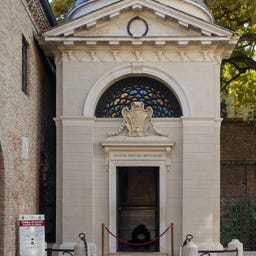
In the Tomb of Dante, a neoclassical mausoleum in the heart of Ravenna, rests one of Italy's most significant poets: Dante Alighieri, who found his final resting place here in 1321. The simple structure, designed by architect Camillo Morigia in the late 18th century, houses a Roman sarcophagus containing the poet's mortal remains and is topped by a small dome adorned with pine cones.
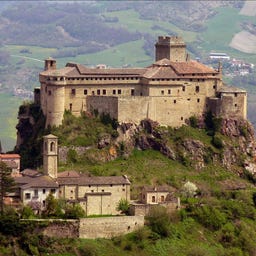
Majestically, the Castello di Bardi sits atop a red jasper rock overlooking the confluence of the Noveglia and Ceno rivers in Emilia-Romagna. Built in the 9th century, this fortress evolved from an important defensive stronghold into a magnificent princely residence in the late 16th century, before serving as a prison and administrative building after the Landi family died out.
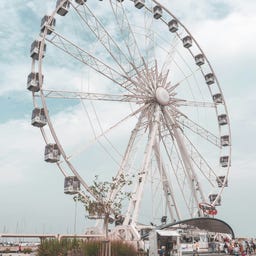
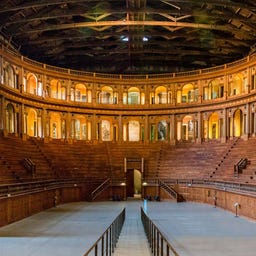
In the Palazzo della Pilotta in Parma, you will find the Teatro Farnese, one of the most significant Baroque theaters in Italy. This wooden masterpiece from the early 17th century was meticulously rebuilt after being almost completely destroyed during World War II. Designed by Giovan Battista Aleotti, the U-shaped auditorium once accommodated 3,000 spectators, but it was only used eight times during its original era.
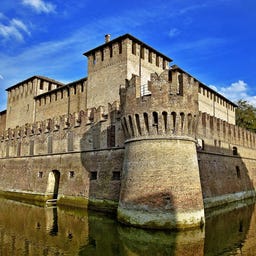
In the charming town of Fontanellato, you’ll find the Rocca Sanvitale, surrounded by a moat and with a history dating back to the 12th century. Originally built by Oberto I Pallavicino, this fortress evolved over the centuries into a square castle featuring three distinctive round towers, and today it houses a fascinating museum.
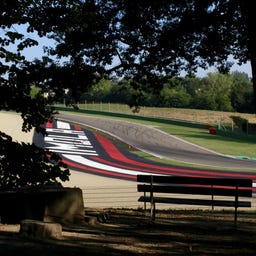

Near Fontanellato, you will find the Labirinto della Masone, the largest bamboo labyrinth in the world, spanning seven hectares. Opened in 2015, this cultural center is the realization of a vision by Franco Maria Ricci, inspired by his childhood fascination with labyrinths and his collaboration with writer Jorge Luis Borges.
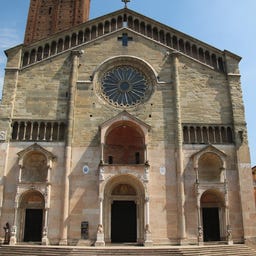
The majestic Duomo di Piacenza, the main church of the Diocese of Piacenza-Bobbio, has stood in the heart of the northern Italian city since the early 12th century. This Romanesque cathedral, consecrated by Pope Innocent II in 1132, captivates with its distinctive façade made of pink Veronese marble and sandstone.
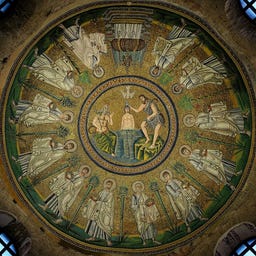
In the early 6th century, the Ostrogoth king Theodoric the Great had this unique baptistery built as a church for Arian Christians. The octagonal brick structure features magnificent mosaics under its dome, depicting the baptism of Christ, the twelve apostles, and the Holy Spirit as a dove. As the only surviving Arian baptistery in Italy, it stands as a testament to the remarkable time when Arians and orthodox Christians lived side by side in Ravenna.
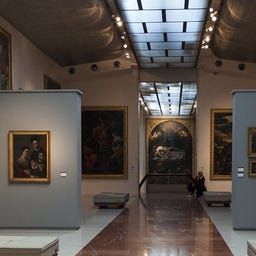
In the Pinacoteca Nazionale di Bologna, one of the most important national museums in Italy, you can expect an impressive collection of Emilian painting from the 13th to the 18th century. Housed in a former Jesuit novitiate, the museum features masterpieces by Giotto, Raffaello, and Guido Reni, providing a comprehensive insight into the art history of the region.

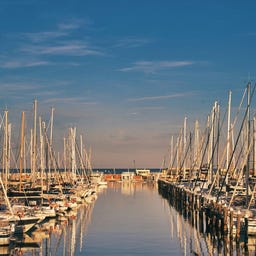
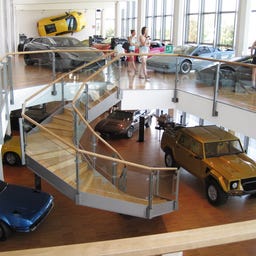
In the Italian Sant'Agata Bolognese, you can visit the Museo Lamborghini, which opened in 2001 and showcases the impressive history of the legendary sports car manufacturer. On two floors, you can admire an extensive collection of historic vehicles, from the first 350 GT to futuristic concept cars like the Veneno. After several expansions, the latest in 2019, the museum now operates under the name MUDETEC with a significantly larger exhibition space. A special highlight is the detailed family tree of all Lamborghini models ever produced, which impressively illustrates the brand's technical evolution.
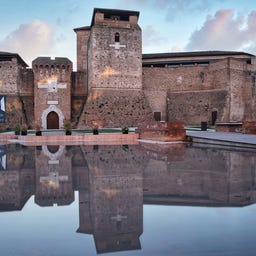
In the heart of Rimini, the impressive Castel Sismondo rises, a remarkable fortress from the 15th century, built by Sigismondo Pandolfo Malatesta between 1437 and 1454 as a symbol of his power.
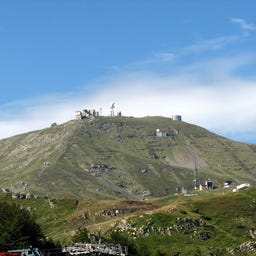
At 2,165 meters high, Monte Cimone stands as the tallest peak of the northern Apennines, overlooking the Emilia-Romagna region and offering you a breathtaking panoramic view that stretches all the way to the Alps and the Adriatic Sea.
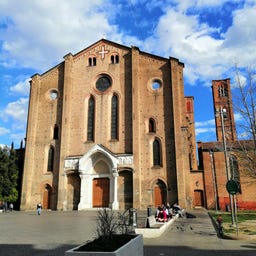
The majestic Basilica di San Francesco combines Romanesque and Gothic architecture into an impressive work of art since the 13th century, marked by its distinctive flying buttresses and the 48.5-meter-high bell tower, which is visible from afar.
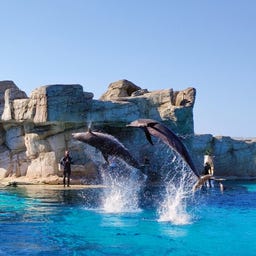
In the naturalistic and technological theme park Oltremare in Riccione, you can expect a fascinating mix of wildlife and edutainment across 110,000 m². Opened in 2004, the area features expansive aquariums and animal enclosures, as well as a 4,000 m² adventure zone for kids and an impressive rainforest simulation.

In the heart of Modena stands the impressive Palazzo Ducale, which originated as a fortress in 1291 under Obizzo II d'Este. After the Este residence was moved from Ferrara, the palace was transformed into a magnificent residence in the 17th century by Francesco I d'Este, with contributions from notable architects like Gian Lorenzo Bernini and Francesco Borromini.
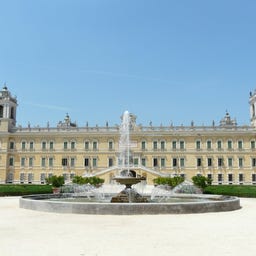
In Colorno, northern Italy, you will find the magnificent Palazzo Ducale, a stunning Baroque residence from the early 18th century, built by Duke Francesco Farnese on the remains of a medieval fortress. Also known as the Reggia di Colorno, this palace boasts over 400 rooms, most of which feature marble floors and ceiling frescoes, inspired by the design of Versailles.

In the Galleria Estense in the heart of Modena, you will find one of the most significant art collections in the Emilia-Romagna region, dating back to the Este dukes. Founded in 1854 by Francesco V d'Asburgo-Este, the gallery features exquisite artworks from the 14th to the 18th century in four main halls and 16 smaller exhibition rooms, including masterpieces by Velázquez, El Greco, and Bernini.
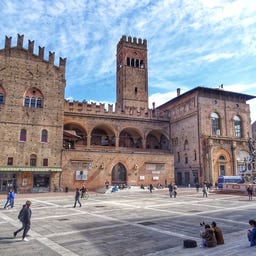
The Palazzo Re Enzo in the heart of Bologna is an impressive testament to medieval architecture from the 13th century, originally built as an extension of the Palazzo del Podestà. Its tumultuous history is closely linked to King Enzo of Sardinia, who was held captive here for 23 years until his death in 1272 - according to legend, even in a cage at night.
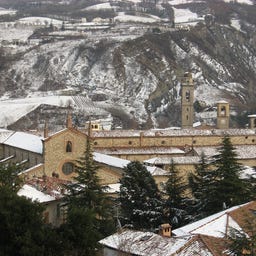
Founded in 614 by Saint Columban, the Abbey of San Colombano is one of the most significant early monastic centers in Europe, once home to a famous scriptorium that housed over 700 manuscripts. The current basilica, built between 1456 and 1522, captivates with its Renaissance frescoes and contains the artistically crafted sarcophagus of the saint in its crypt.
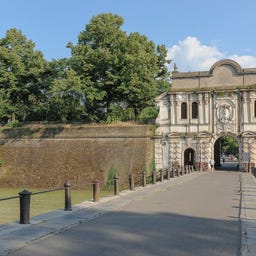
The impressive Cittadella di Parma is a 16th-century Renaissance fortress, built under Duke Alessandro Farnese with its distinctive pentagonal shape and imposing bastions. What once served as a defensive structure, barracks, and prison is now a vast public park where you can still admire the original military architecture.

On the Piazza Grande, the historic main square of Modena, more than 900 years of vibrant history are reflected. This UNESCO-protected square is lined with three impressive buildings: the majestic Duomo, the slender bell tower Ghirlandina, and the Palazzo Comunale, which has served as the seat of government since the 13th century.

Under the striking glass pyramid of Cocoricò in Riccione, you can experience one of the most influential techno clubs in Italy, which has been shaping the electronic music scene since 1989. In four different areas - from the impressive Pyramid to the open-air area Titilla - international top DJs like Armin van Buuren and deadmau5 perform.
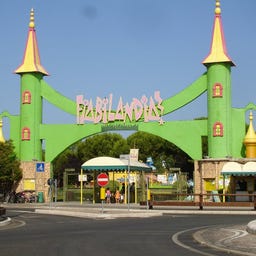
In the coastal town of Rimini, you can find Fiabilandia, one of the oldest amusement parks in Italy, which has been offering family fun on 150,000 square meters since it opened in 1965. The park is divided into four themed areas - Western, Eastern, Medieval, and a magical village - and is open from March to November.
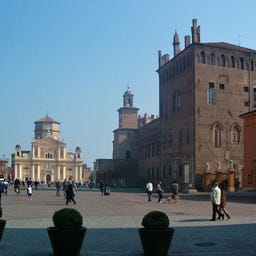
The majestic Piazza dei Martiri is one of the largest squares in Italy, covering 17,000 m², and has been the vibrant center of Carpi since the 16th century. Surrounded by significant buildings influenced by Renaissance architecture, the square features the impressive Portico Lungo with its 52 arches, the mighty Castello dei Pio, and the Cathedral completed in the 18th century.
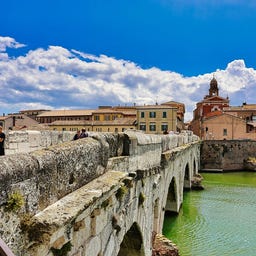
The majestic Ponte d'Augusto in Rimini is one of the most impressive surviving Roman bridges in Italy. It was started under Emperor Augustus in 14 AD and completed by Tiberius in 21 AD. Built from Istrian stone, the bridge captivates with its five harmoniously designed arches and intricately crafted reliefs, which depict a laurel wreath and an amphora, among other things.
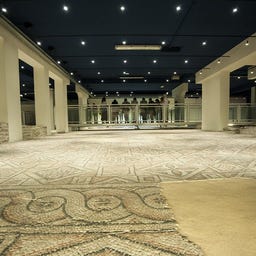
Three meters beneath the Church of Sant'Eufemia in Ravenna lies one of the most fascinating examples of Byzantine mosaic art from the 5th to 6th century. Discovered by chance in 1993, this site spans 700 square meters and impresses with its exceptionally well-preserved mosaics and marble inlays.
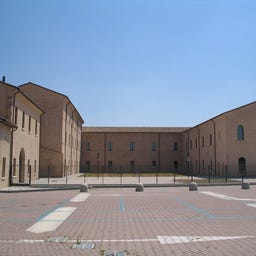
In an impressive complex of five historic buildings, including a 13th-century Dominican monastery, you will find the Musei di San Domenico - now home to the municipal art gallery of Forlì. The refectory is adorned with significant 16th-century frescoes by Girolamo Ugolini, depicting religious scenes such as the Crucifixion and the "Mensa di San Domenico."
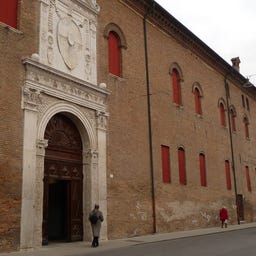
In the Palazzo Schifanoia, which literally means "to drive away boredom," you experience one of the most significant fresco cycles of the 15th century in an authentic Renaissance palace. Built in 1385 for Alberto V d'Este as a noble retreat, the Palazzo houses impressive wall paintings with astrological themes and scenes from the life of the Este family in the magnificent Salone dei Mesi.
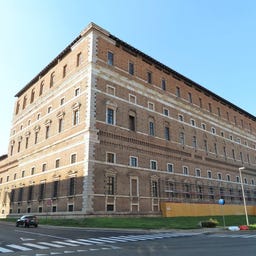
In the impressive Palazzo Farnese, which was built from 1558 under Francesco Paciotto and Jacopo Barozzi, the powerful Farnese family once resided as rulers of the Duchy of Parma and Piacenza.
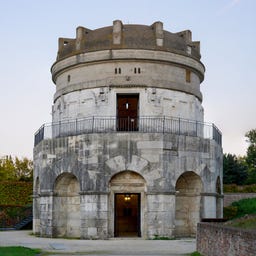
The Mausoleum of Theoderic, built in the 6th century, is one of the most significant UNESCO World Heritage sites in Ravenna and impresses with its unique architecture made of Aurisina stone. The decagonal structure, commissioned by Theoderic the Great or his daughter Amalasuntha, consists of two levels and is topped by a massive monolithic roof that, with a diameter of 10.76 meters and a weight of 230 tons, continues to baffle experts today.
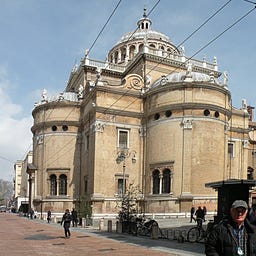
In the magnificent Basilica di Santa Maria della Steccata, Renaissance and Baroque styles blend into an impressive sacred building that has shaped the cityscape of Parma since the 16th century. The Greek cross layout with four symmetrical apses and the majestic dome by Antonio da Sangallo the Younger make the church an architectural masterpiece.
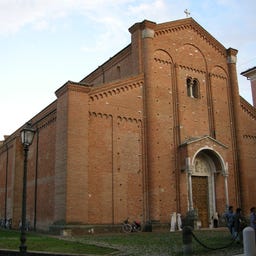
The Abbey of Nonantola is one of the most significant Benedictine monasteries in Italy, founded in 752 by Abbot Anselmo on a land grant from the Lombard king. The impressive Romanesque church features a particularly striking crypt with its 64 intricately designed columns, while the adjacent Benedictine and Diocesan Museum showcases one of Italy's most important church treasures, including rare textile relics from the 9th century.
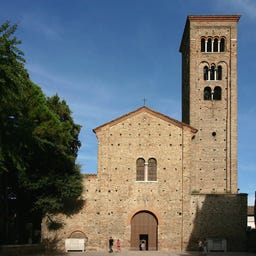
The Basilica di San Francesco in the historic center of Ravenna uniquely combines medieval architecture with literary significance. In the three-nave church from the 9th/10th century, Dante Alighieri was buried in 1321, making it an important part of the city's Dante Zone.

Autodromo di Modena is a motorsport circuit located in Modena, a city known for its rich automotive heritage. Opened in 2011, the track was designed to offer a high-performance testing and racing environment for sports cars, motorcycles, and professional drivers. The circuit features a technical layout with multiple turns, making it ideal for vehicle development and driver training. It is often used by local automotive companies, including Ferrari and Maserati, for testing and events. Additionally, the track hosts track days, corporate events, and driving experiences for enthusiasts.
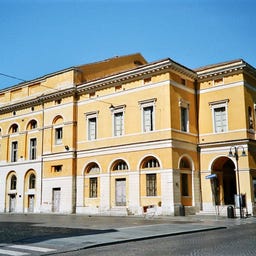
In the historic center of Ravenna, you will find the Teatro Dante Alighieri, the city's most important theater, which was grandly opened in 1852 with Giacomo Meyerbeer's "Roberto il diavolo."
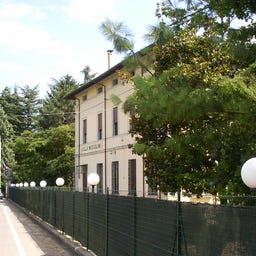
In the idyllic landscape of Forlì, you will discover the Villa Carpena, built between the late 19th and early 20th centuries, which served as the residence of Benito Mussolini and his family from 1914 onwards. Also known as Villa Mussolini - Casa dei Ricordi, the complex includes a farmhouse, the main building that was expanded in 1923, and a small playhouse for Mussolini's children.
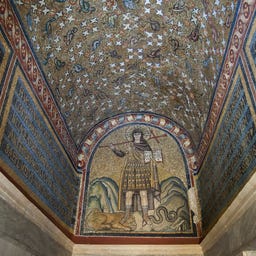
In the Archbishop's Chapel of Ravenna, you will find one of the best-preserved Orthodox buildings from the time of the Ostrogoth king Theodoric the Great. Built in 495 AD, the chapel, which is now located on the first floor of the Archbishop's Museum, captivates with its unique mosaics featuring early Christian themes.
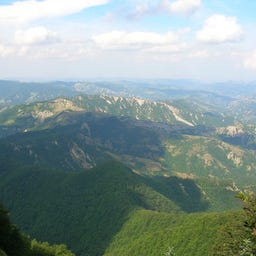
In the Tuscan-Romagnol Apennines lies the Parco nazionale delle Foreste Casentinesi, one of the most valuable forest complexes in Europe, featuring ancient beech forests and over 1,300 plant species. The park's history dates back to the Etruscans, while the monastery foundations of San Romualdo in Camaldoli and San Francesco in La Verna in the 11th and 13th centuries played a significant role in preserving the forests.
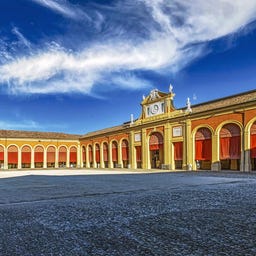
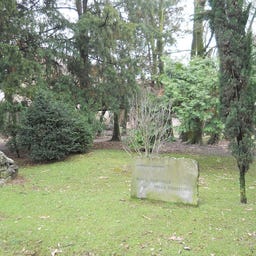
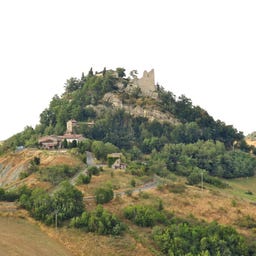
High above the province of Reggio Emilia stands the ruins of Castello di Canossa, one of the most historically significant castle complexes in Northern Italy. Built in 940 by Adalberto Atto, the fortress became famous due to the legendary meeting between Pope Gregory VII and Emperor Henry IV in 1077—an event that gave rise to the well-known expression "to go to Canossa."
